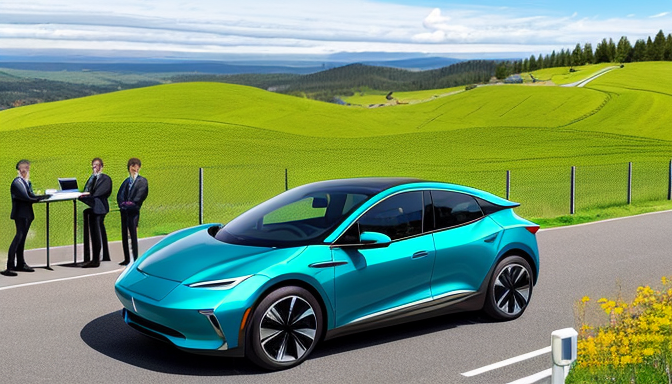As we zoom into the future, it’s clear that electric vehicles (EVs) are not just a trend; they are a revolution. Imagine a world where the hum of an engine is replaced by the whisper of electric motors. This transformation is already underway, with EVs leading the charge in making transportation more sustainable and efficient. With advancements in technology, these vehicles are becoming increasingly accessible, offering drivers a thrilling combination of performance and eco-friendliness.
The popularity of electric vehicles has soared in recent years, driven by several key factors. Firstly, battery technology has made significant strides, resulting in longer ranges and faster charging times. No one wants to be stranded with a dead battery, right? Government incentives are also playing a crucial role, making it financially easier for consumers to make the switch. Plus, with growing awareness around environmental issues, more people are choosing EVs as a way to contribute to a greener planet. It’s like choosing to wear a superhero cape—every little bit helps in the battle against climate change!
So, what does this mean for our planet? Electric vehicles are making a significant impact by reducing carbon emissions and improving air quality. Think of it as a breath of fresh air in a smog-filled city. By promoting sustainable energy sources, EVs are essential in the fight against climate change, paving the way for a cleaner, healthier future. The shift towards electric driving is not just a personal choice; it’s a collective movement towards a more sustainable world.
The Rise of Electric Vehicles
As we zoom into the future of transportation, electric vehicles (EVs) are revving up to take center stage. You might be wondering, what’s driving this shift? Well, it’s a thrilling mix of advancements in battery technology, enticing government incentives, and a surge in consumer awareness about our planet’s health. Imagine a world where your car not only gets you from point A to B but also contributes to cleaner air and a healthier environment. Sounds like a dream, right?
One of the game-changers in the rise of EVs is the astonishing progress in battery technology. Modern batteries are not just lighter and more efficient; they also offer longer ranges, allowing drivers to travel further without the dreaded range anxiety. With companies continuously innovating, we’re seeing batteries that can charge in a fraction of the time they used to take. This is like going from a flip phone to a smartphone—once you experience the convenience, there’s no going back!
Moreover, government incentives play a pivotal role in this electric revolution. Many countries are rolling out attractive tax credits and rebates for EV buyers, making them more accessible to the average consumer. It’s like getting a discount on your favorite gadget, but this time, it’s a vehicle that helps reduce your carbon footprint.
Lastly, the growing awareness of environmental issues is prompting consumers to make more sustainable choices. People are starting to realize that every little bit counts in the fight against climate change. So, the next time you see an electric vehicle cruising down the street, remember, it’s not just a car; it’s a step towards a greener future!

The Environmental Impact of EVs
Electric vehicles (EVs) are not just a trend; they represent a revolution in how we think about transportation and its impact on our planet. Imagine a world where the air is cleaner, and our cities are quieter. With the rise of EVs, this vision is becoming a reality. These vehicles are designed to reduce our carbon footprint significantly, which is crucial in the fight against climate change. By replacing traditional gasoline engines with electric motors, we can drastically cut down on harmful emissions that contribute to global warming.
One of the most compelling aspects of EVs is their role in improving air quality. Studies show that cities with a higher adoption of electric vehicles experience a marked decrease in air pollutants, leading to healthier communities. For instance, a recent report indicated that replacing just 10% of conventional vehicles with EVs could reduce nitrogen oxide emissions by over 30%. This is a game-changer, especially in urban areas plagued by smog and poor air quality.
Moreover, EVs promote the use of sustainable energy sources. As more charging stations are powered by renewable energy—like wind and solar—the positive environmental impact multiplies. It’s not just about driving electric; it’s about driving sustainably. The future is bright for EVs, and as technology advances, we can expect even greater efficiency and lower costs.
In summary, the environmental benefits of electric vehicles are undeniable. They pave the way for a cleaner, more sustainable future, making them not just an alternative but a necessity in our fight against climate change. So, are you ready to hop on the electric bandwagon?
Frequently Asked Questions
- What are electric vehicles (EVs)?
Electric vehicles (EVs) are cars that run on electricity rather than gasoline or diesel. They use one or more electric motors powered by batteries, making them a cleaner alternative to traditional vehicles.
- How do electric vehicles impact the environment?
EVs significantly reduce carbon emissions, helping to combat climate change. By using renewable energy sources for charging, they can improve air quality and decrease our reliance on fossil fuels.
- Are electric vehicles more expensive than gasoline cars?
While the upfront cost of EVs can be higher, they often save money in the long run due to lower fuel and maintenance costs. Plus, government incentives can help offset the initial price!
- How far can I drive on a single charge?
The range of an electric vehicle varies by model, but many modern EVs can travel between 200 to 300 miles on a single charge. Some high-end models even exceed this range!
- What happens if I run out of battery?
If your EV runs out of battery, you can’t just fill it up with gas! However, most EVs have a range of options for emergency charging and roadside assistance to get you back on the road.